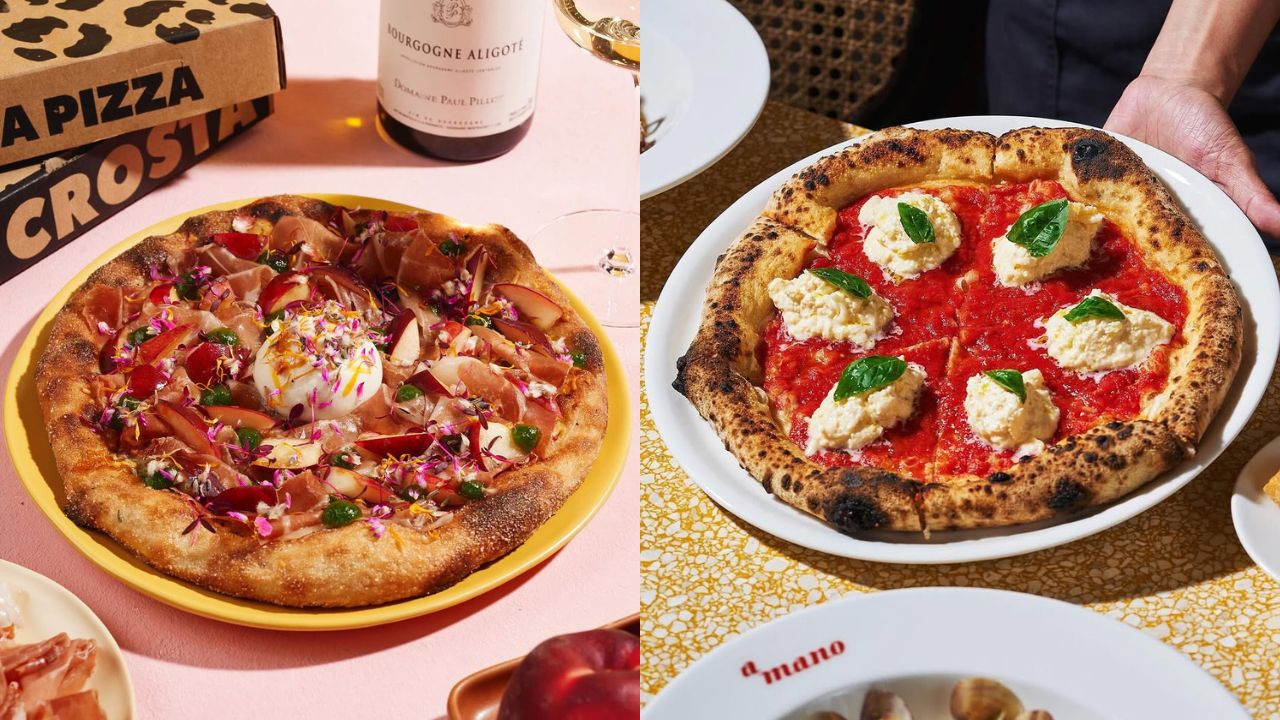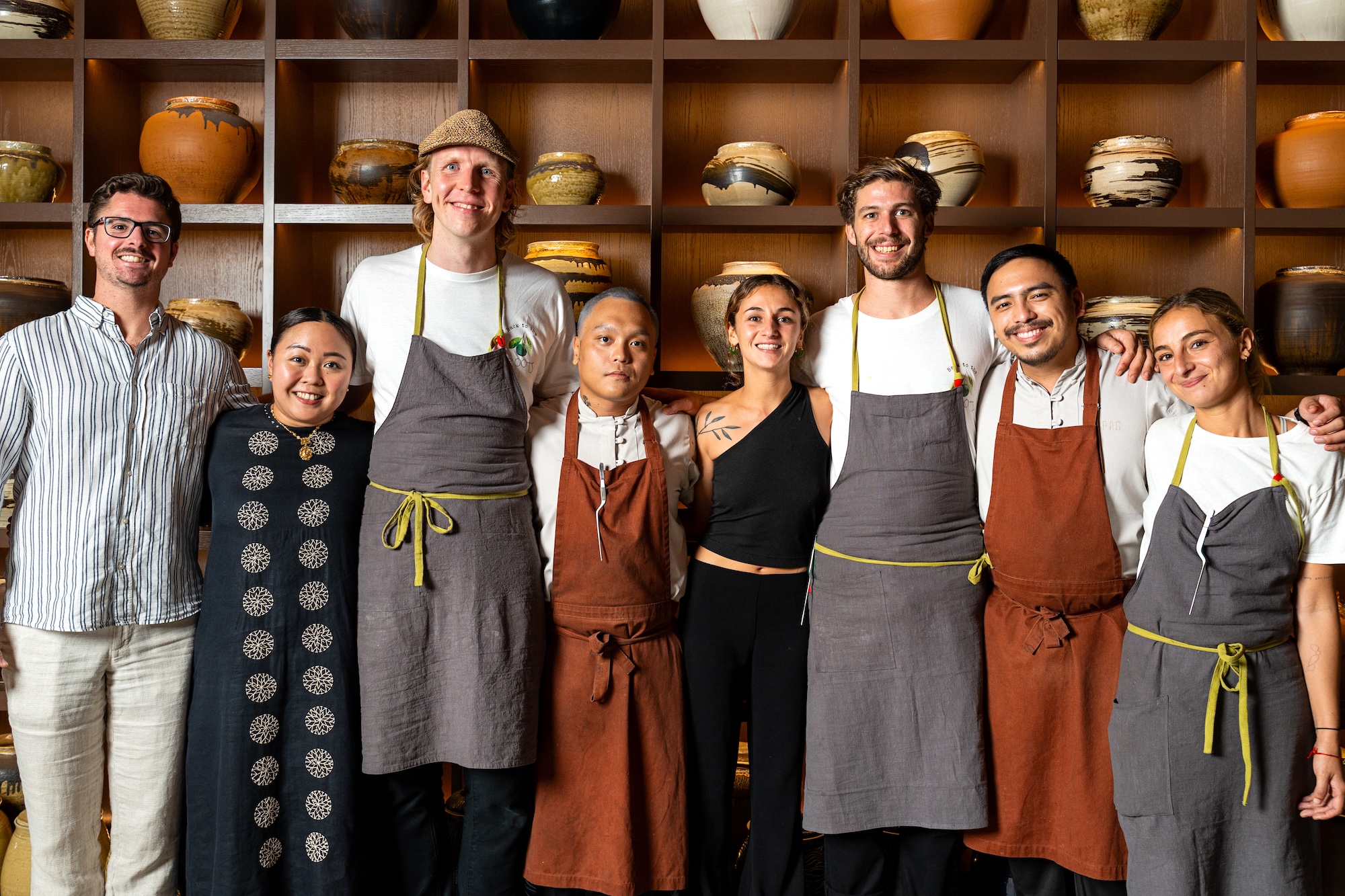7 Hectares is the kind of farm Kiko Torno needed to create, and at a time when overfishing is threatening the world’s waters, it’s also the kind of sustainability the Philippines sorely needed to see
On a rainy June night, sea bass, snails, and soft-shell crabs all star in a collection where the taste does the talking. Kiko Torno, whose wispy silver locks conceal his rich, masterful understanding of sustainable aquaculture, looks a little nervous even if he’s done this several times before.
A sip of Aperitivo Loka and Prosecco concocted by mixologist Mikey Presa however is all it takes for Torno to muster the courage and transform the intimate Pond to Plate gathering at Grace Park into an artistic common ground with his acute, battle-scarred philosophies. Responding to the public’s incomprehension of sustainable aquaculture’s viability and positive effects to the environment, Torno’s monologue comes with a composed ferocity that refuses to surrender his place in the industry.
“Unfortunately it’s the upper class that appreciates [sustainable seafood] because it comes with cost. That’s why I’m doing the modicums to educate how Filipinos should enjoy the natural taste,” says Kiko Torno
“Unfortunately it’s the upper class that appreciates [sustainable seafood] because it comes with cost. That’s why I’m doing the modicums to educate how Filipinos should enjoy the natural taste. Having Grace Park, Hey Handsome, and Antonio’s to supply to showed me the scarcity of the supply.”
These educational seafood soirees are where he channels his advocacies of awareness to a small but empowered community. That same night, Margarita Forés, a longtime believer of Torno’s “seafood purveyor” status, stood beside him as he addressed the waitstaff hours before the selected guests, including a couple from one of the most exclusive resorts in the country, arrived. One can get sucked in by Torno’s character piece as he mobilizes all his resources to buck those that deny or fail to understand the future of aquaculture, but his narrative is made even more relevant by a percolating displeasure at injustice.
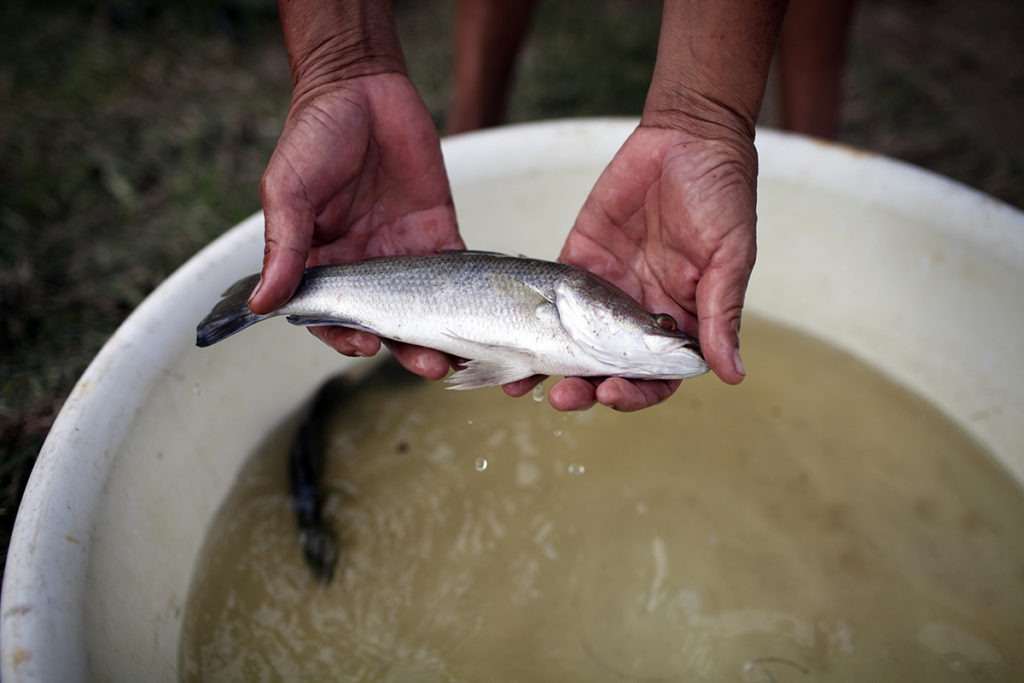
“Anong meron sa Pilipinas na bakit walang dangal ang mga farmers? ‘Yun ‘yung issue,” says this former advertising stalwart, raising questions about the dynamics of the industry. “Walang rumerespeto sa mga farmers. Pagdating ng mga farmers sa mga restaurants, taga kaagad ang presyo. It’s not sustainable for the farmers. Sabi ko, ‘I think we can do something.’”
Proper measures at 7 Hectares

A few weeks prior to his modicum, Torno walked us through 7 Hectares, his farm in Saravia (now renamed E.B. Magalona) just north of Bacolod, Negros Occidental where he nurtures Asian sea bass or Australian barramundi (apahap), red snappers (maya-maya), mud crabs (alimango), and soft-shell crabs in 10 one-meter deep ponds.
“Right now I’m also researching about slipper oysters and local scallops. Everything is naturally fed and responsibly grown,” he says. “Back in the ’70s, ’80s, Negros was one of the top producers of prawns. But the owners f****d it up big time. Let’s say the population of one pond can only hold 5,000, they’d flood it with 150,000. We were exporting but now the ecosystem is broken. Even now it’s hard to grow prawns.”
It’s a mistake Torno is careful not to replicate. Many farmers and entrepreneurs driven by a need to make a difference have churned out thoughtful businesses with an enterprising, preservative vision—look at Earthbeat Farms, Holy Carabao, and GK Enchanted Farm—and yet there’s also something remarkably distinct about Torno’s approach that sets it apart from its peers.
“If you ask me [whether sustainable aquaculture is going to be a big part of Philippine seafood], it has to. But there’s a big chance it won’t happen because it needs patience,” says Kiko Torno
“You have to study the natural environment,” he says of what constitutes sustainable aquaculture, “because once you have understood your ecosystem, that’s when you adjust what you can healthily grow in your area. Sometimes others use chemicals. They will violate the environment to grow what they want.”
Torno has been running his farm for three years with a non-linear exploration of the complexities behind sustainability. Over the course of his installments, Torno threaded through the science of seafood, immersed himself in biology research, looked into the capacity of how much he can grow, and suffered heavy losses when excruciating heat in Visayas two years ago led to a drop in dissolved oxygen, wiping out nearly all of his crops.
“They’re very delicate,” he says. “The survival rate is low. If I throw in 1,000, kapag hindi binantayan ng maayos, lalabas 200 lang.”
Non-commercial efforts
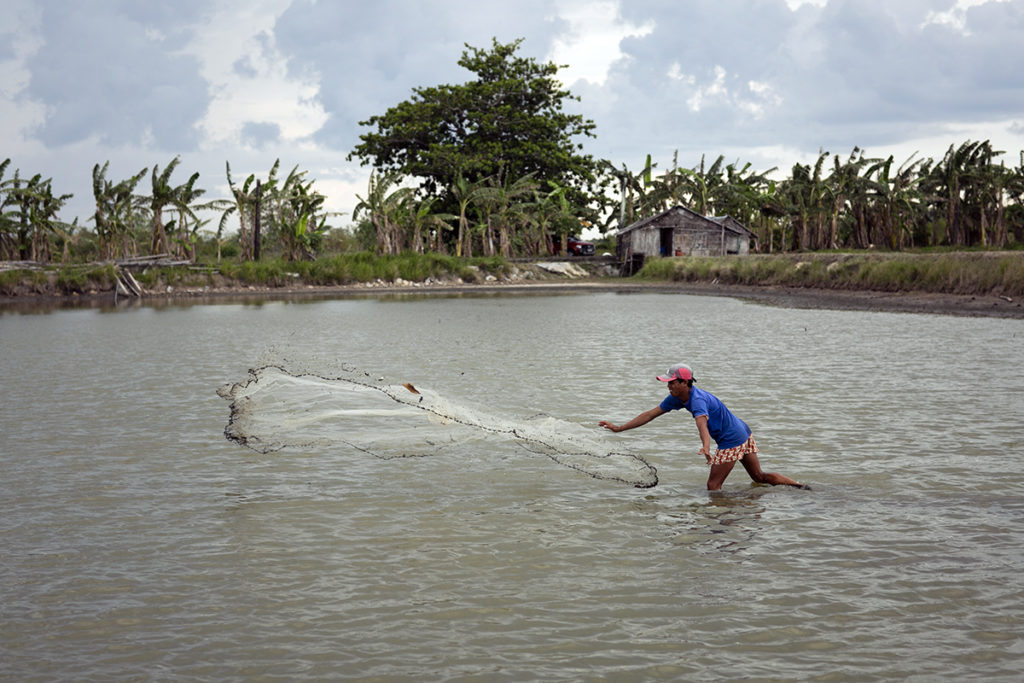
With 10 ponds that carry a variety of crops, the architecture here tells the story of a Negros transplant’s anti-aristocratic, forward-thinking vision. It’s a case study in sustainability founded on three philosophies: natural feeding, responsible growth, and correct market trade size. There is a working ecosystem Torno built from scratch to mimic his crop’s natural environment. In the farm, chickens roam. A lone cow looks on lazily. And huts where two of his staff, Bibing, 52, and Bakbak, 29, station themselves. Part of the pleasure of 7 Hectares is the way each small cog’s role in the farm emerges gradually.
To start, dried chicken manure is packed in sacks, which they call tea bags, then left in the dry ponds before letting the water flow back in. Torno lets the bags sit there for two weeks to create an environment that encourages seaweed and algae culture, both acting as food and sanctuary for their tilapia living next to the waterway, to flourish. These tilapias are then fed to the carnivorous sea bass and snappers, ensuring an all-natural diet and eschewing artificial feeds.
Crabs, meanwhile, despite co-habitating with these fish, feed on annelids or worms. In one pond, the stocking density for fish is 1,500. For crabs, it’s 600. “We need to respect that so they won’t eat each other,” explains Torno.
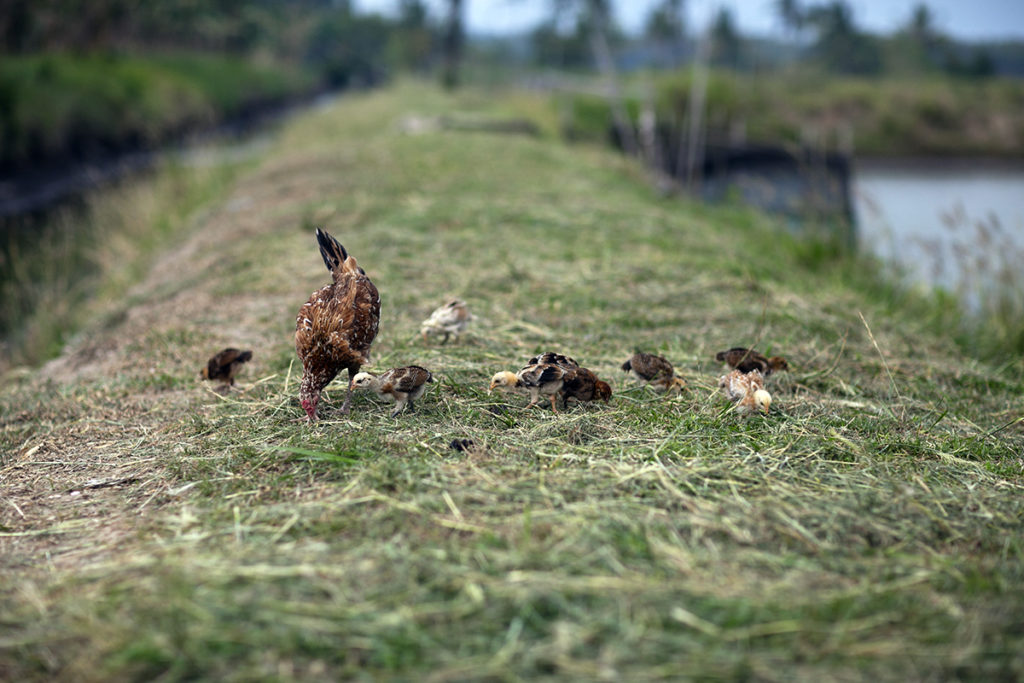
Spawning season runs from December to April but there’s no question about the frailty of the process: Hatchlings are cared for in netted bamboo sanctuaries called nurseries (or substrates for crabs) for three weeks to increase survival rate. During this grow-out stage, Bibing and Bakbak continue the sorting and selective process. Once they reach the right size, they are then transferred into the ponds.
“The beauty of aquaculture is it’s not subjected to seasons. I can stock as much as I can to have a consistent supply throughout the year. That’s why our next thrust is to have our own hatchery. And then we can do retail.”
None of Torno’s decisions are driven by commercial motives. Rather, he has always acted out of conviction. It’s hard not to admire his determination and while his disdain for too much commercialism is apparent—he only sells to a handful of clients and only at 500 grams and above—it’s offset by an integrity that far exceeds that of any major fish producer so much so that he has earned the respect of Forés, Tonyboy Escalante, and Nicco Santos.
And the most interesting thing about Torno is that he’s turned the buying process on its head—instead of competing with large-scale fish farms and trying to find a niche, he created his own space in the market. “Grace Park wants one-kilo sizes, Antonio’s wants 500 to 600 grams, Hey Handsome also wants a particular size. I can consistently supply them with consistent sizes because it’s regulated. I can control that without violating any natural cycle.”
The World Bank report Fish to 2030: Prospects for Fisheries and Aquaculture estimates that in 2030, 62 percent of seafood for consumption will come from fish farms to meet increasing demands as well as address overfishing’s breaking point
But regardless of Torno’s clean intentions, some non-believers will find ways to dismiss pond-raised crops—a feisty comment on Forés’ apahap Instagram post (“No no no to fish farming”) is a prime example. The debate between wild-caught and farm-raised seafood is an exhaustive, impassioned one. The World Bank report “Fish to 2030: Prospects for Fisheries and Aquaculture” estimates that in 2030, 62 percent of seafood for consumption will come from fish farms to meet increasing demands as well as address overfishing’s breaking point.
That said, while aquaculture holds opportunities to improve food security and generate livelihood, it’s not the solution to overfishing unless stringent sustainable and responsible practices are put in place.
World report on aquaculture
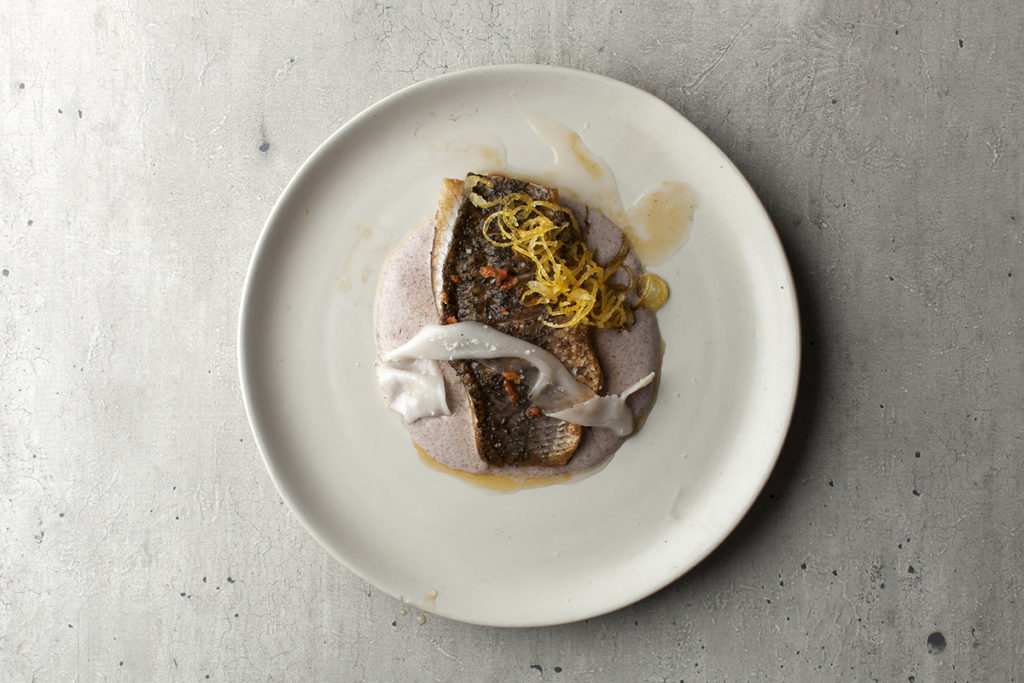
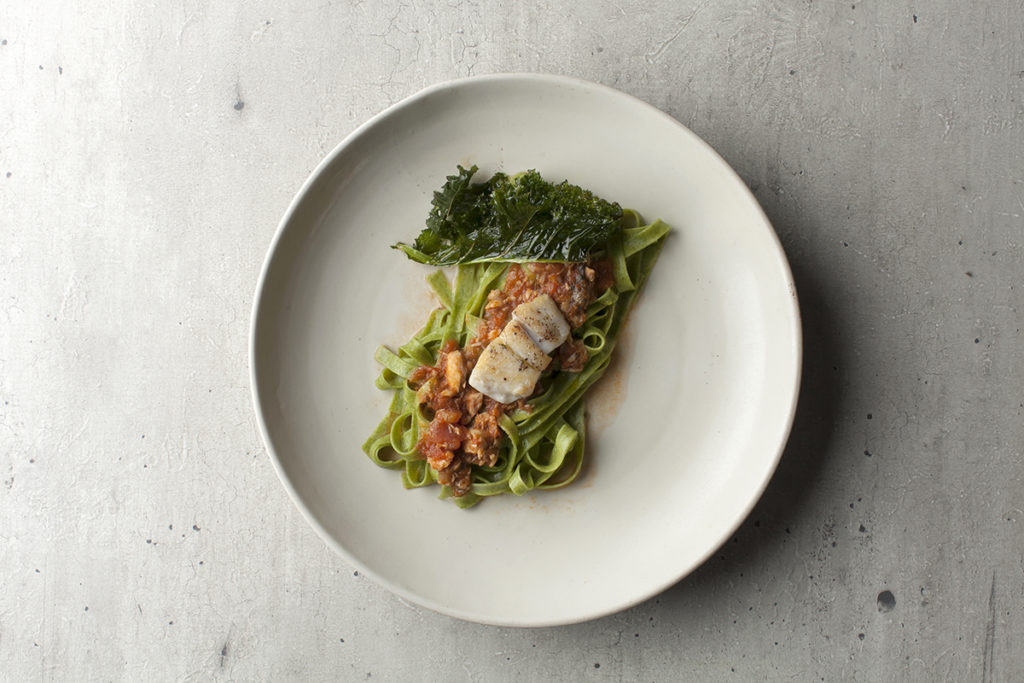
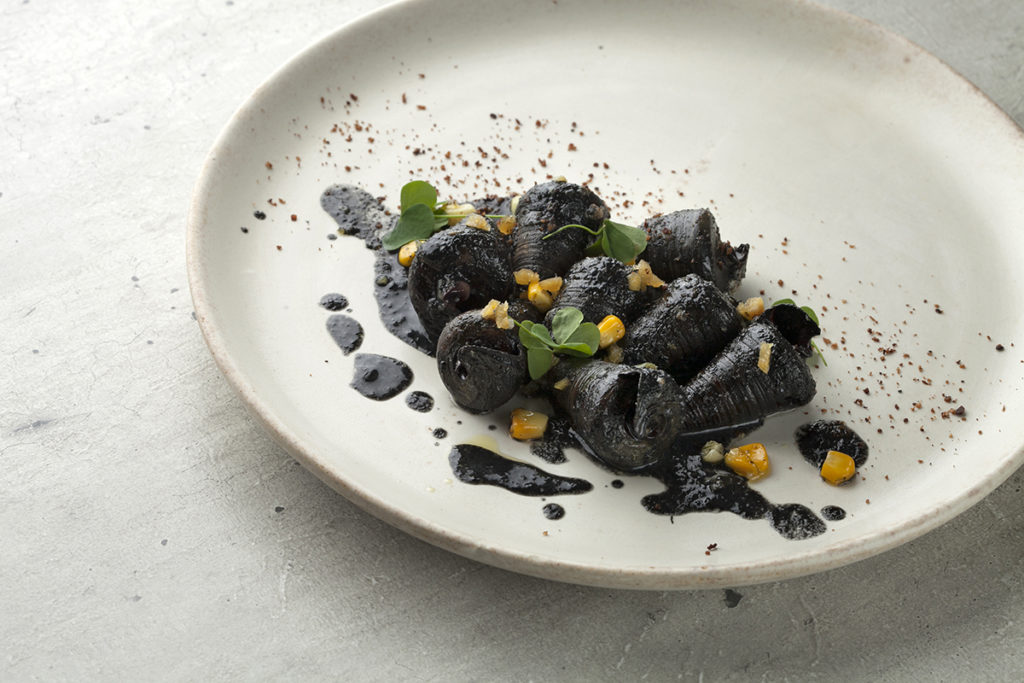
Interest in toxin contamination from both sides are inescapable: wild-caught fish like tuna, swordfish, and mackerel contain high levels of mercury while farmed fish can have PCB (polychlorinated biphenyl) contamination—although a 2004 study on farmed salmon found that PCB levels between farmed and wild fish are similar. Rapid species production could also cause extensive environmental degradation, as in the case of Negros’ prawn industry back in the days. The same World Bank report cites aquaculture practices that have posed problems for its promise such as the “disease outbreaks in shrimp aquaculture in China, Thailand, and Vietnam, and in salmon farming in Chile.”
“We continue to see excessive and irresponsible harvesting in capture fisheries, and in aquaculture, disease outbreaks, among other things, have heavily impacted production,” says Juergen Voegele, director of Agriculture and Environmental Services in the report. “There is a major opportunity for developing countries that are prepared to invest in better fisheries management and environmentally sustainable aquaculture.”
Yet no matter the difficulty of sustainability, farmers like Torno are in it for the long haul not only because that is the direction fish production should head but also because his vision is much too absorbing, his resolve much too implicit for this to not ever work.
“Negros was one of the top producers of prawns. But the owners f****d it up big time. Let’s say the population of one pond can only hold 5,000, they’d flood it with 150,000. We were exporting but now the ecosystem is broken. Even now it’s hard to grow prawns”
“If you ask me [whether sustainable aquaculture is going to be a big part of Philippine seafood], it has to. But there’s a big chance it won’t happen because it needs patience,” he says. “For aquaculturists, there is potential but I’m not sure if the government has the capacity to sustain or help it.”
But like the restaurateurs and chefs Torno is currently working with, many would agree that sustainable aquaculture provides consumers something traditional fishing cannot: traceability. Like coffee. “You get to know where the produce is sourced from, how it’s grown. Aquaculturists can show you the elements of how algae is grown, why algae is being grown, the use of poultry, their value and role in the environment.” And more importantly, it brings a select audience into the discussion and bring a network of like-minded individuals into a system they may not have known otherwise. The more people learn about sustainable aquaculture, the more viable the future of fish farming is in the Philippines.
So while Torno may still be on an uphill climb with his crops, what gives his philosophies their impact is the way they are tied with his identity and conviction. He is involved in every step of the way and justly so, considering that his reputation is always at stake every time he puts himself, his farm, and the people of Negros in front of a discerning audience. Sustainable aquaculture may not be where it’s supposed to be at yet but at its heart, it does value one thing says Torno.
“There are no shortcuts to doing the right thing.” Yes, even when it comes to sipping signature spirits.
Originally published in F&B Report Vol. 14 No. 5













